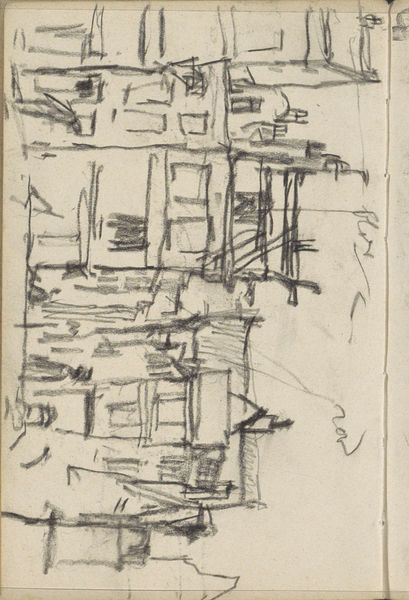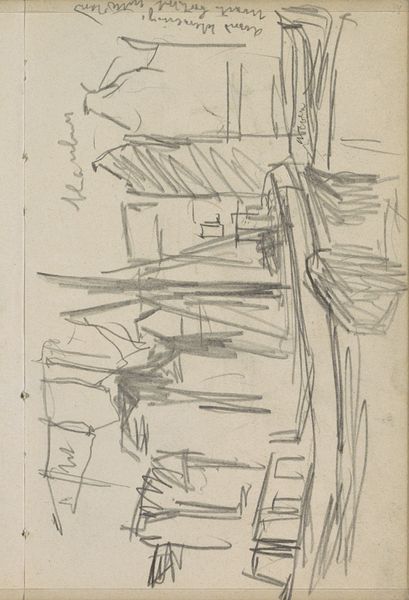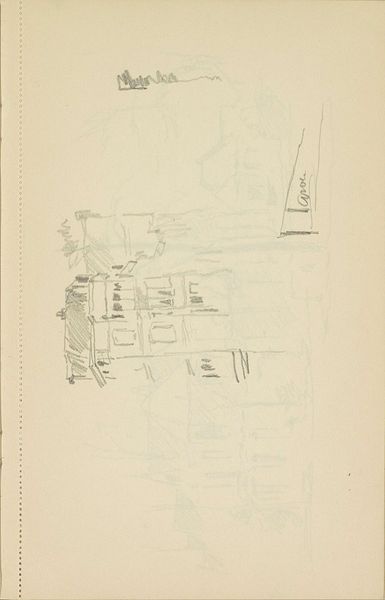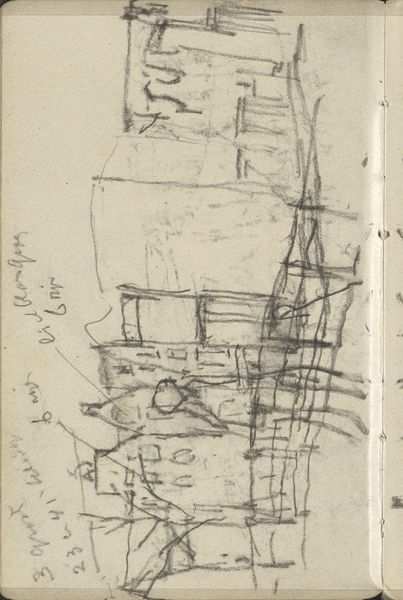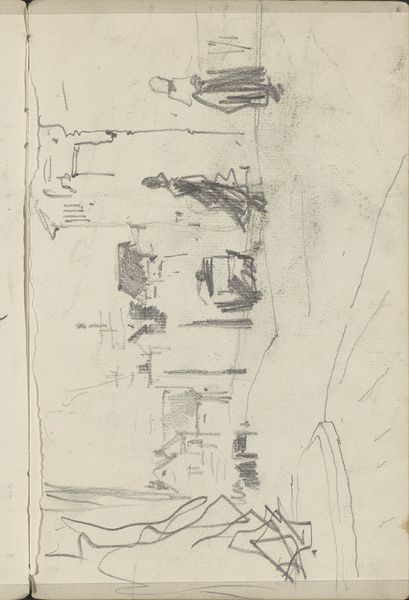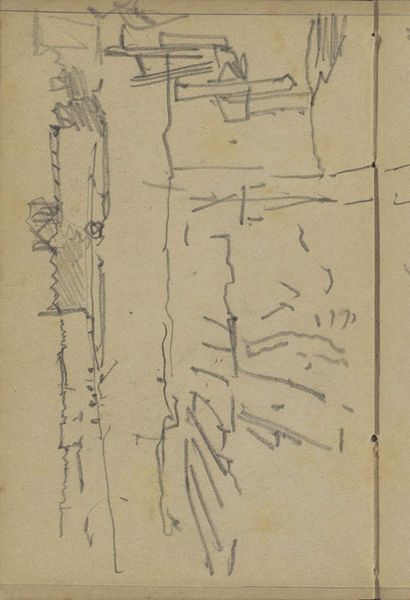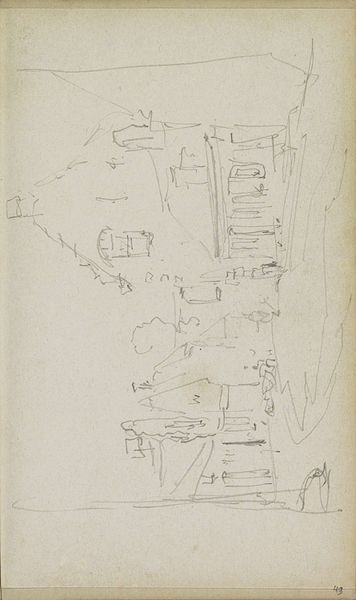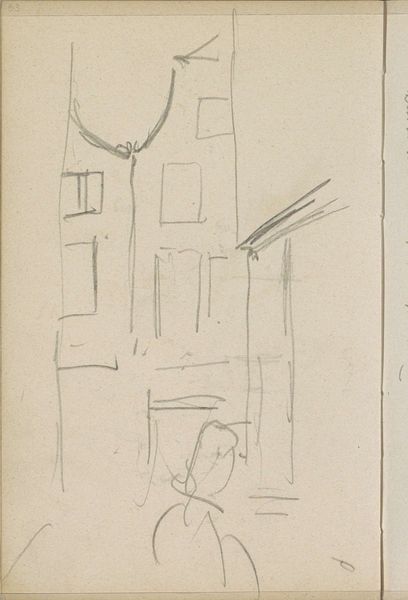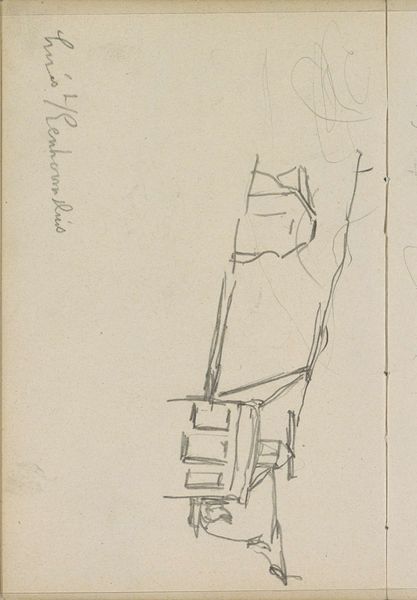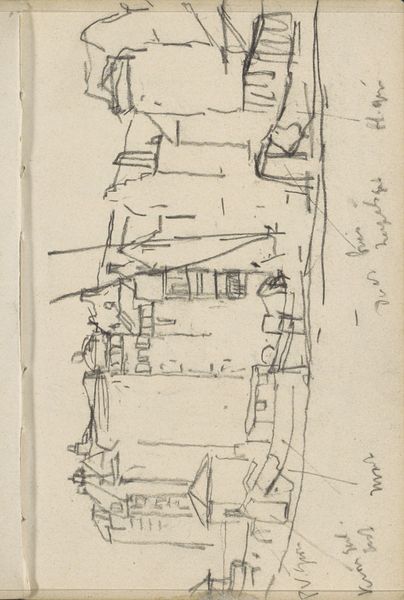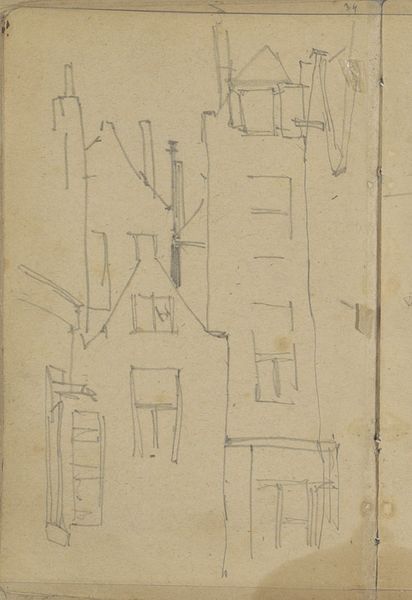
Gezicht op het voormalige Leesmuseum aan het Rokin c. 1900 - 1901
0:00
0:00
georgehendrikbreitner
Rijksmuseum
Copyright: Rijks Museum: Open Domain
Editor: So, this is George Hendrik Breitner's "Gezicht op het voormalige Leesmuseum aan het Rokin," dating from around 1900 or 1901. It's a pencil drawing, part of his sketchbook work, and I find it really evocative—almost like a fleeting memory of a city scene. What do you see in this piece? Curator: Beyond the initial impression of a cityscape sketch, I see a layering of social contexts. Breitner was known for documenting Amsterdam's working class. How does this seemingly straightforward architectural sketch connect to broader themes of class, labor, and urban life at the turn of the century? Do the hurried lines and unfinished details speak to a specific kind of urban experience, perhaps a transient, rapidly changing one, accessible for some and invisible for others? Editor: That's interesting. I hadn't really thought about it in terms of social class. I was more focused on the aesthetic of the Impressionist style, and the quick strokes. Are you suggesting that the style itself has a social or political implication? Curator: Precisely. Impressionism, in its focus on fleeting moments and everyday life, can be seen as a democratic art form, turning away from grand historical narratives. However, consider whose everyday life is being represented. In Breitner's case, how might his depiction of the Rokin, a site of commerce and cultural exchange, engage with the socio-economic divides of Amsterdam at the time? Who had access to this cityscape? Who benefitted from it? And whose labor made it possible? Editor: That makes me look at it in a new way. The sketch, in its incompleteness, could suggest a commentary on the parts of the city that were ignored, maybe the workers rather than the wealthy visitors of the museum? Curator: Exactly! Consider how Breitner uses line and composition to either highlight or obscure certain elements. These choices reveal, consciously or unconsciously, a particular perspective and perhaps even a social critique. We can look through a feminist lens and consider the gendered dynamics within the painting – perhaps thinking of the exclusion or muted existence of women in that space. Editor: I see! I came in thinking about Impressionism and cityscapes, but now I am contemplating ideas around the urban landscape being a reflection of socio-economic forces at play. Curator: It's about recognizing that art isn't created in a vacuum, and engaging with intersectional contexts that illuminate the full richness of the piece.
Comments
No comments
Be the first to comment and join the conversation on the ultimate creative platform.
